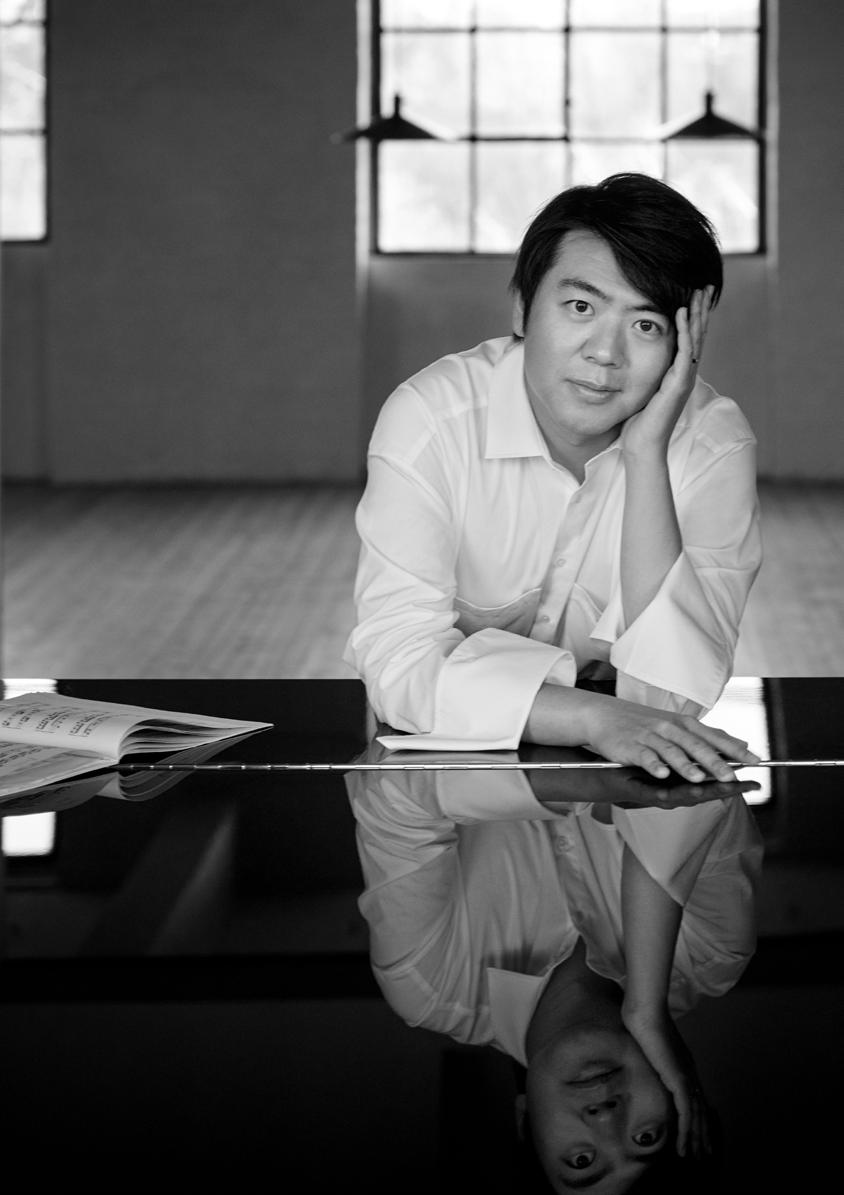




Artist
Lang Lang piano






Artist
Lang Lang piano
Wednesday 25 June at 7:30pm
Hamer Hall, Arts Centre Melbourne
Program
Gabriel Fauré Pavane, Op. 50 [7’]
Robert Schumann Kreisleriana, Op. 16 [32’]
Interval [20’]
Frédéric Chopin 12 Mazurkas [40’]
Frédéric Chopin Polonaise in F sharp minor, Op. 44 [11’]
Running time: 2 hours and 10 minutes including interval. Timings listed are approximate. In consideration of your fellow patrons, the MSO thanks you for silencing and dimming the light on your phone.

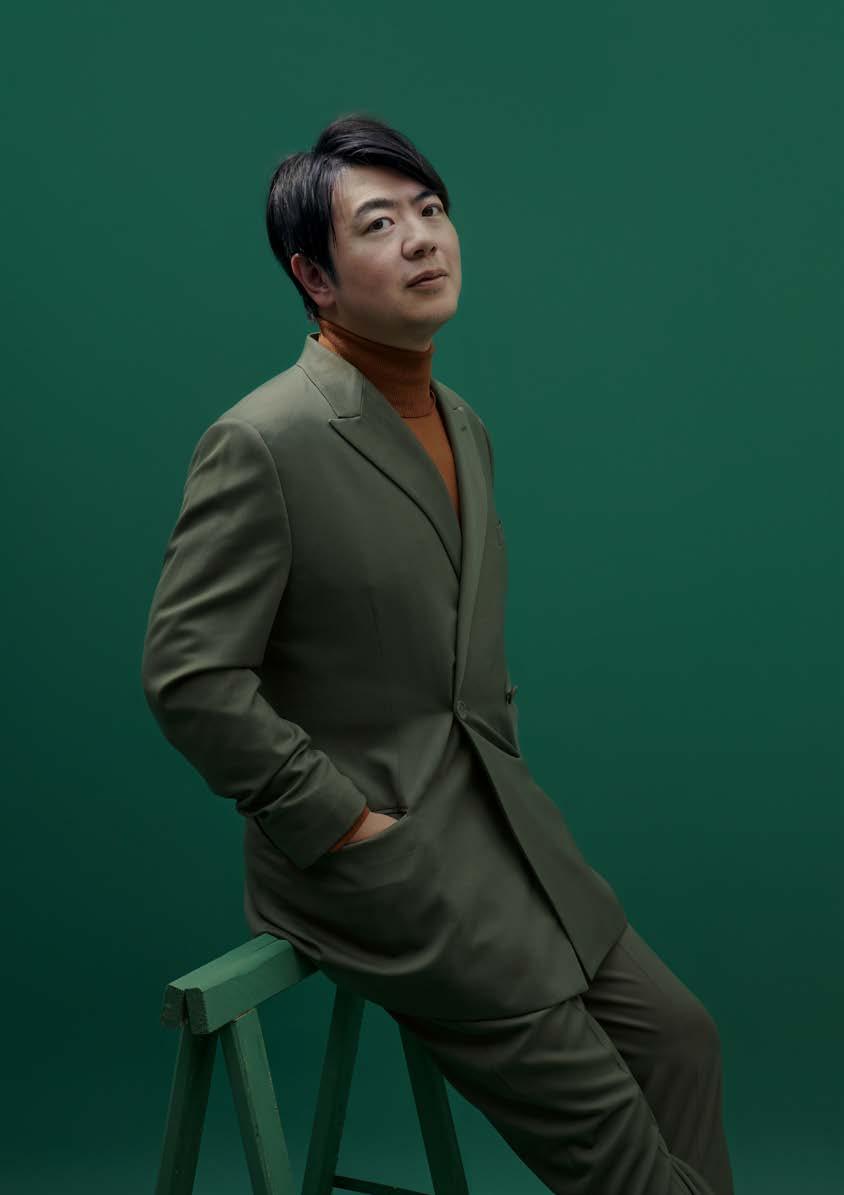

Lang Lang is a leading figure in classical music today – as a pianist, educator and philanthropist he has become one of the world’s most influential and committed ambassadors for the arts in the 21st century. Equally happy playing for billions of viewers at the 2008 Olympic Opening Ceremony in Beijing or for just a few hundred children in the public schools, he is a master of communicating through music.
Heralded by the New York Times as ‘the hottest artist on the classical music planet’, Lang Lang plays sold-out concerts all over the world. He has forged collaborations with conductors including Simon Rattle, Gustavo Dudamel, Daniel Barenboim and Christoph Eschenbach, and performs with all the world’s top orchestras. He is known for thinking outside the box and frequently steps into different musical worlds. His performances at the Grammy Awards with Metallica, Pharrell Williams or jazz legend Herbie Hancock were watched by millions of viewers.
For about a decade, Lang Lang has contributed to musical education worldwide. In 2008 he founded the Lang Lang International Music Foundation, aimed at cultivating tomorrow’s top pianists, championing music education at the forefront of technology, and building a young audience through live music experiences. In 2013 he was designated by the Secretary General of the United Nations as a Messenger of Peace focusing on global education.
Lang Lang started playing the piano aged three, and gave his first public recital before the age of five. He entered Beijing’s Central Music Conservatory aged nine, and won First Prize at the International Tchaikovsky Competition for Young Musicians at 13. He subsequently went to Philadelphia to study with legendary pianist Gary Graffman at the Curtis Institute of Music. He was 17 when his big break came, substituting for André Watts at the Gala of the Century, playing Tchaikovsky’s First Piano Concerto with the Chicago Symphony Orchestra under the baton of Christoph Eschenbach; he became an overnight sensation and the invitations started to pour in.
Lang Lang’s boundless drive to attract new audiences to classical music has brought him tremendous recognition: he was presented with the 2010 Crystal Award in Davos and was picked as one of the 250 Young Global Leaders by the World Economic Forum. He is also the recipient of honorary doctorates from the Royal College of Music, Manhattan School of Music and New York University. In 2011 he was honoured with the highest prize awarded by the Ministry of Culture of the People’s Republic of China and received the highest civilian honours in Germany (Merit of the Federal Republic of Germany) and France (Medal of the Order of Arts and Letters). In 2016 he was invited to the Vatican to perform for Pope Francis. He has also performed for numerous other international dignitaries, including four US presidents and monarchs from many nations. www.langlang.com | www.langlangfoundation.org
The MSO creates music that matters for all Victorians, whoever or wherever you are.
In addition to attending this concert, your generous gift this tax time will help ensure our concerts and programs are more accessible, welcoming, and inclusive than ever.
A gift of any size is appreciated. Thank you. mso.com.au/give | (03) 8646 1551 All gifts over $2 are fully tax-deductible
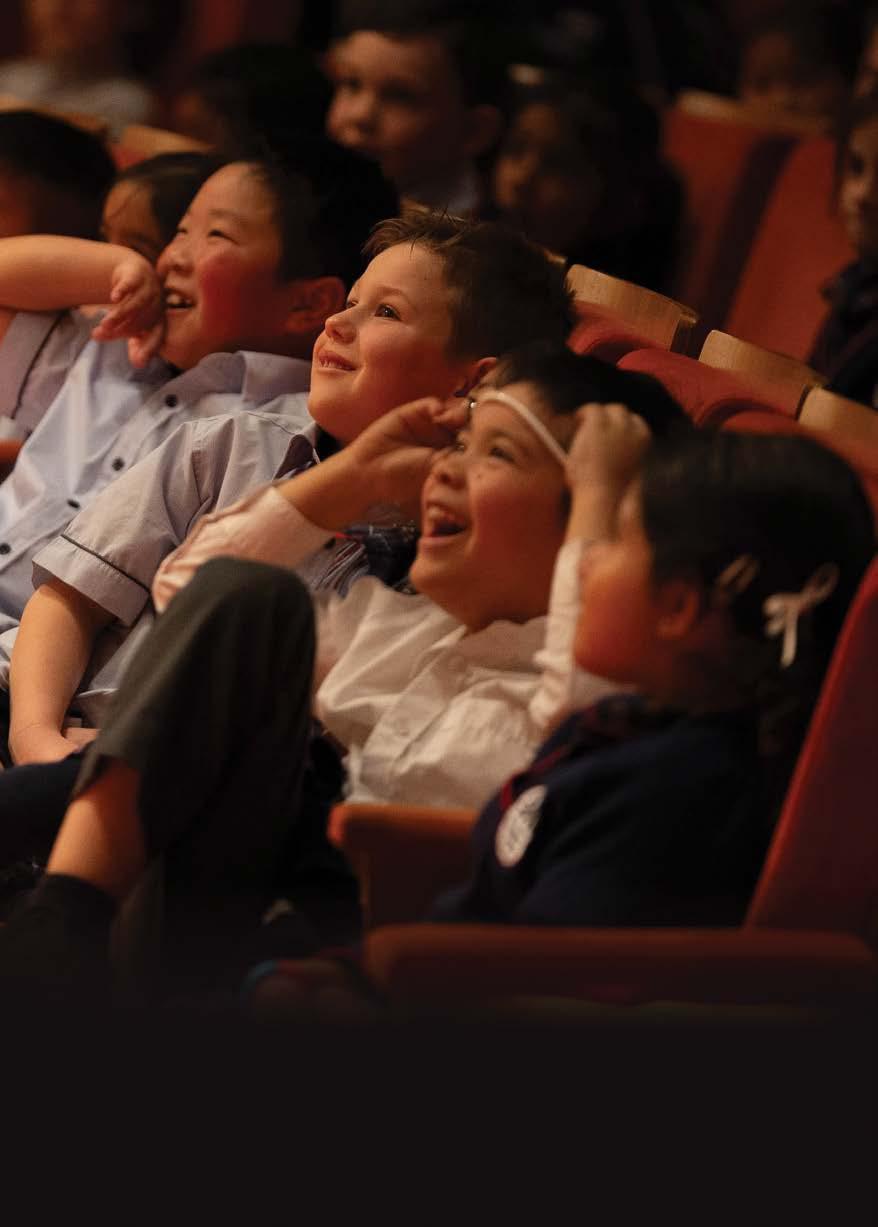
Give today
PHOTO BY PAUL NADAR
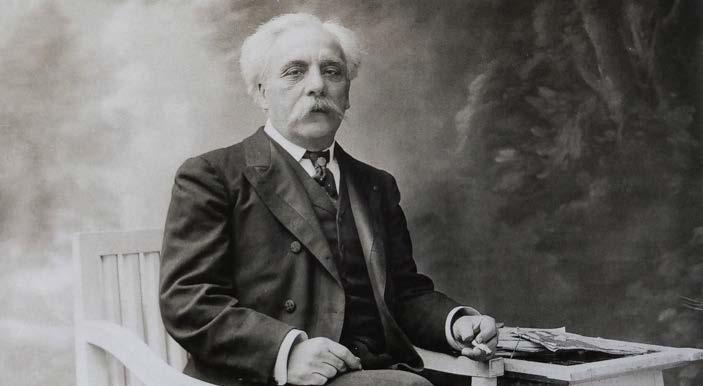
Gabriel Fauré (1845–1924)
Pavane, Op. 50
When Gabriel Fauré died in 1924 at the age of 79, his funeral was held at the Madeleine church in Paris, with a ceremonial guard, thousands of mourners and a performance of perhaps his bestknown work, the Requiem. It was a long way from the Pyrenean foothills where he was born.
Fauré’s father became the head of a school near the city of Foix in 1849. Gabriel’s musical talent emerged soon after. He would improvise for hours on the harmonium in the school’s chapel and in 1853 the family was persuaded by wellmeaning friends that the boy should be sent to Paris to the École de Musique Classique et Religieuse. This school soon became known as the École Niedermeyer, after its founder and principal Louis Niedermeyer, who was inspired to teach how ‘modern harmony is submitted to the form of the ancient modes’. Fauré remained at the Niedermeyer School for
11 years, absorbing the gentle contours of Gregorian chant and learning how to clothe those ancient melodies in appropriate, but modern, arrangements. This is a crucial aspect of Fauré’s style.
Fauré, with Camille Saint-Saëns, was a prime mover in founding the Société Nationale de Musique in 1871; even as a young man, Fauré helped provide a platform for French music from Franck to Debussy and beyond.
Fauré’s most famous orchestral work, the Pavane (in F sharp minor), is a fin‑de‑siècle rendering of the stately 16th-century processional dance in F sharp minor. It was composed in 1887 and premiered the following year; in 1891 it was featured entertainment at a garden party held in the Bois de Boulogne, with dancers in Renaissance period costume, orchestra, and a hidden chorus singing fake-galante verses of love and coquettishness by Robert de Montesquiou. Now most often played by orchestra alone, though Fauré published his piano version of it in 1891.
Robert Schumann (1810–1856)
Kreisleriana, Op. 16
Äußerst bewegt [Extremely animated]
Sehr innig und nicht zu rasch [Introspective and not too fast]
Sehr aufgereft [Agitated]
Sehr langsam [Very slow]
Sehr lebhaft [Very lively]
Sehr langsam
Sehr rasch [Very fast]
Schnell und spielend [Quick and playfully]
Schumann was born in the Saxon city of Zwickau, where his father was a successful writer, translator (notably of English Romantic writers like Byron into German) and bookseller. As a boy, Robert had access to a huge library, and he began writing his own plays and poetry, as well as composing, in his teens. At 18 he went to Leipzig to study law, where he also began piano lessons with renowned pedagogue Friedrich Wieck, father of the then nine-year-old virtuoso, Clara.
After a year at the University of Heidelberg, Schumann returned to Leipzig in 1830, bent on becoming a musician. His first mature compositions include the Abegg Variations, with a theme that ‘spells’ the name of the work’s fictional dedicatee, and Papillons, the first of many collections of musical miniatures grouped around a poetic theme. It is at this time, too, that Schumann came under the influence of two arch-Romantic writers: Jean Paul Richter and ETA Hoffmann. In his diaries he creates fictional pseudonyms for Wieck, Clara and himself, including the characters of Florestan (representing Schumann’s virtuosic side) and Eusebius (his more introverted side). These characters would assume great importance in his music, particularly Carnaval, which dramatises Schumann’s (and that of his fellow Davidsbündler –‘members of the league of David’) battle

against philistinism in the arts. He prosecuted this also in the serious music criticism which he practically invented, founding the Neue Zeitschrift für Musik, which began publication in 1835.
Robert had fallen in love with Clara when she was 15, and the years 1839–40 were dominated by a series of court battles between the composer and Wieck. Schumann prevailed, and the couple married in 1840, when Clara was 21. The following years saw Clara consolidate her fame as a pianist; Robert, owing to repetitive strain injury (not, as Wieck asserted, caused by using a device to increase his stretch) incurred in the mid-1830s, had given up hope of coming a virtuoso. From 1840, determined to ‘master all the forms of music’, he composed in various genres, spending roughly a year on each: song (1840), orchestral music (1841), chamber music (1842), the oratorio (1843), producing several works in each genre in concentrated bursts. In 1844 he suffered a bad episode of the depression which had affected him since 1833, but emerged with new confidence in his craft.
This period saw the Schumanns’ move to Dresden where Robert turned his attention to the stage. In 1850 they moved to the Rhineland city of Düsseldorf where Robert
became municipal music director. Musical standards were low, and Schumann’s health poor. One bright spot was the arrival, in 1853, of the young Johannes Brahms, whom Schumann immediately realised was a genius and welcomed into his home.
Sadly, Schumann’s illness returned in 1854 with aural hallucinations, delusions and memory loss, and he attempted suicide by throwing himself into the Rhine. He lived out his last two years in a strikingly benign asylum near Bonn; but on doctors’ orders was forbidden to see Clara until two days before he died.
In 1834 Schumann met the composer Johann Ludwig Böhner (1787–1860), who, Schumann said, had been as famous as Beethoven in his day, and who on this occasion improvised for Schumann for a couple of hours. ‘Flashes of the old lightning were there,’ Schumann wrote, ‘but otherwise all is dark and desolate. If I had time I would write a Böhneriana, using the themes he gave me.’
This was perhaps the seed of Kreisleriana, which appeared four years later, for while it likely contains no material of Böhner’s, Schumann was sure that Böhner had been the model for the somewhat crazed Kapellmeister Johannes Kreisler, who appears in several tales of ETA Hoffmann. Hoffmann, a major figure in early German Romanticism, writes that:
Poor Johannes had been generally regarded as insane for some time, and to be sure, his doing and dealings, particularly his artistic activities, contrasted so sharply with all that is held to be reasonable and proper, that his mental disintegration could hardly be doubted. His thought-processes became increasingly eccentric and disjointed.
One of the Kreisler tales is The Life and Opinions of the Tomcat Murr, in which Murr, who has learned to enjoy
self-satisfied bourgeois life, writes his autobiography on manuscript paper that also contains the biography of Kreisler, thus setting up the kind of intense contrast of personalities (as with his Florestan and Eusebius ‘masks’) that appealed to Schumann.
Contemporary German musicians and writer Karl Böhmer have suggested another moment in the Kreisler stories that might bear on Schumann. Kreisler has been engaged to perform at a soiree held by Privy Councillor Röderlein. Someone sees that he has the score of ‘the Bachian Variations’, and requests them, imagining some light short variations such as produced by composers like Paisiello. Kreisler duly launches into Bach’s ‘Goldberg’ Variations, during which the assembled worthies gradually drift out to the refreshment table leaving him alone at the keyboard. As he completed the final statement of the aria, the music’s pages seemed inscribed with a thousand ’elaborations of the theme…the notes came alive, shimmering and leaping about me – electric fire charged through my fingers to the keyboard – the spirit from which it flowed out stripped my thoughts’.
Many, like composer Carl Reinecke, see the eight pieces of Schumann’s cycle as suggesting improvisations on Bach, and writers like Karl Böhmer have noted similarities to specific moments in Bach’s music. Schumann put it about that the cycle was written in four days (unlikely). He wished to dedicate it to his beloved Clara (who worried that her future husband was writing music like this), but ended up dedicating it to Chopin, who admired the design of the front cover. The piece underwent some revision in 1850.
The ‘electric fire’ of the first movement is driven by fast triplet figures (whose pulse Schumann takes pains to offset rhythmically) that Böhmer compares to the 19th of Bach’s Goldberg Variations. In the second movement, slow lyrical music is



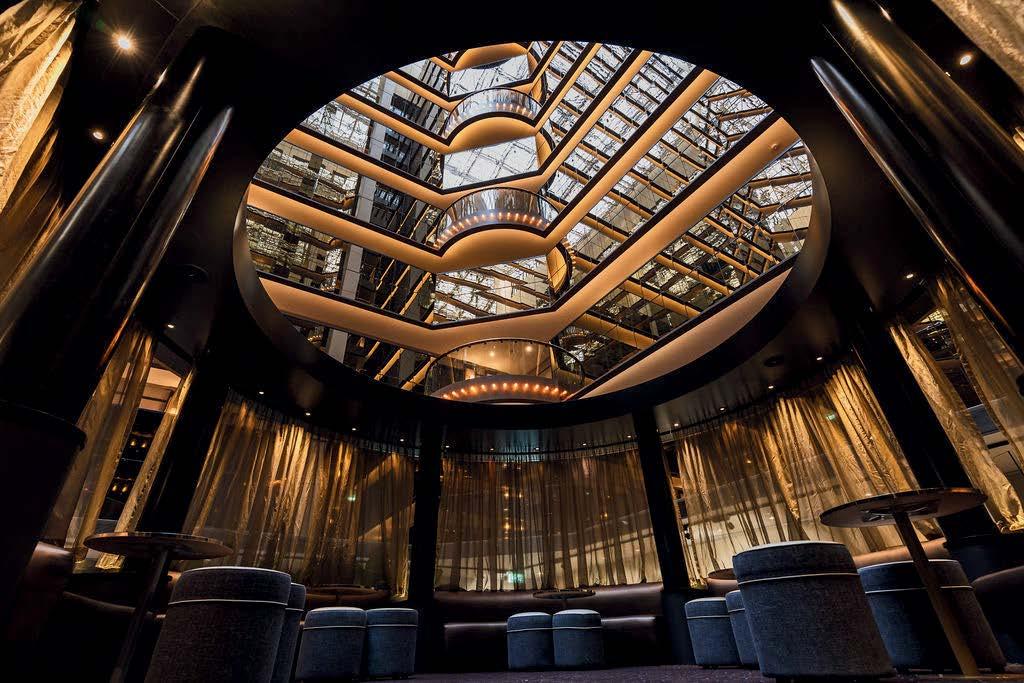
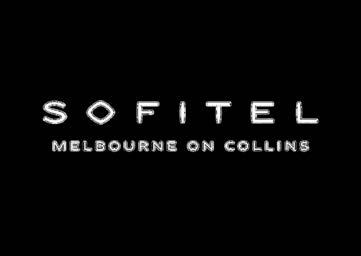

Chopin admired the cover design of Kreisleriana, which depicts a composer–pianist with an angel and a devil at his shoulders – a reflection of the intense contrast of personalities in the music itself.
interrupted by two energetic intermezzos, the second of which has certain gestural and rhythmic echoes of the 17th variation. Böhmer also hears echoes of Bach’s Chromatic Fantasy, two movements of The Art of Fugue, and the C major Fugue from the Second Book of the ‘48’ Preludes and Fugues.
More importantly, perhaps, is the extraordinary dramatic effect of the cycle as a whole, powered by sharp contrasts of extreme emotional states. The tempo markings of the six inner movements all begin with sehr – ‘very’ – and each movement is very different from those that flank it. (Notice, too, that these pieces are considerably longer than the constituent movements of, say, Carnaval.) But even this apparent alternation of fast and slow is further heightened by the contrasting sections within in each movement. The second, as mentioned, is one case, but in even the more conventionally shaped movements, like the sixth, changes of speed and figuration threaten the gracious
equilibrium. The seventh is explosively energetic, but finds time for adagio chords at the end. Throughout, too, Schumann cultivates richly chromatic harmony (despite the pieces, as a whole, hewing closer to B flat major/G minor and related keys) and develops that rhythmic idea from the first piece, where cross rhythms constantly undermine the pulse of the music.
This is hugely evident in the finale, a fast but somewhat awkward dance. Böhmer regards its enigmatic close as reflecting Kreisler’s final disappearance, when ‘someone saw him bounding out of the gate, singing merrily, with two hats turned one over the other and two rastra [for drawing five-line staves on paper] tucked into his red belt like daggers...’
Frédéric Chopin (1810 –1849)
Mazurka in F minor, Op. 7 No. 3
Mazurka in B flat major, Op. 17 No. 1 (Vivo e risoluto)
Mazurka in E minor, Op. 17 No. 2 (Lento, ma non troppo)
Mazurka in A minor, Op. 17 No. 4 (Lento, ma non troppo)
Mazurka in C major, Op. 24 No. 2 (Allegro non troppo)
Mazurka in B flat minor, Op. 24 No. 4 (Moderato)
Mazurka in D flat major, Op. 30 No. 3 (Allegro non troppo)
Mazurka in C sharp minor, Op. 30 No. 4 (Allegretto)
Mazurka in C major, Op. 33 No. 3 (Semplice)
Mazurka in B minor, Op. 33 No. 4 (Mesto)
Mazurka in D major, Op. 33 No. 2 (Vivace)
Mazurka in F sharp minor, Op. 59 No. 3 (Vivace)
Chopin knew from very early in adult life that the career of piano virtuoso was not for him. According to his friend, colleague and rival Franz Liszt, Chopin was ‘repelled by the furious and frenzied face of Romanticism’. Where Liszt’s career traces a magnificent arc from prodigy through virtuoso to distinguished composer of large-scale works, Chopin’s seems a story of withdrawal from the concert platform and even from metropolitan society. But the cliché of him retreating into miniatures is inaccurate. Not only do the solo works in the genres that he made his own, such as the nocturne, ballade, polonaise or mazurka, often take on a substantial scale and an amazing intricacy, Chopin remained interested enough in ‘classical’ forms to complete his Third Sonata as late as 1844.
It is true, though, that after he left Poland in 1830, his piano music became ever more subtle – more suited to the salon than the concert hall – and that he wrote virtually no music involving any other instruments. The pieces for piano and orchestra, including the two concertos, were, with one exception, the work of the late-teenaged composer in his native Warsaw.
Based in Paris, Chopin met the Romantic novelist known as George Sand (Aurore Dupin) in late 1836, and was put off by the
writer’s assumption of masculine manners and clothing. Meeting Sand again in April 1838, Chopin’s attitude changed, and he embarked on the major love affair of his life. Towards the end of that year Chopin, Sand and her two children fled to Majorca where they lived in uncomfortable lodgings and faced open hostility from the puritanical islanders, but there he wrote his Preludes. They returned to France but Chopin’s increasing ill-health strained the relationship, which ended in 1843.
Chopin’s innovation, in his solo music especially, was to introduce a polyphonic complexity to this simple texture without destroying its effect. He famously criticised the music of Beethoven, saying it is occasionally ‘obscure and seems lacking in unity…the reason is that he turns his back on eternal principles; Mozart never.’
While Chopin was puzzled by Schumann’s Kreisleriana, the German composer was in no doubt of Chopin’s genius, and when it came to the mazurkas Schumann straightaway understood the nationalist and political implications of this ostensibly rustic music. The mazurkas, he famously declared, were ‘cannons buried in flowers’.
The mazurka is native to the region of Mazovia, which the 1815 Congress of Vienna had handed to Russia; the
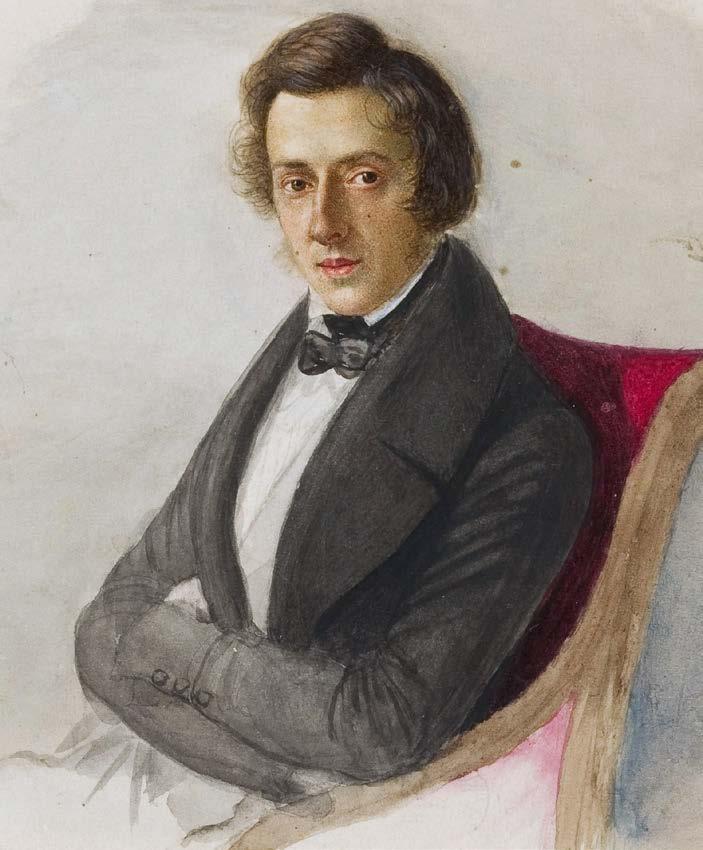
Watercolour portrait of Chopin, made in 1836 by Maria Wodzińska, his fiancée at the time.
November Uprising of 1830 was a doomed attempt by young Polish officers to throw off Russian rule. With the exception of Op. 59, the selection of mazurkas we hear tonight date from the 1830s and are often seen in part as Chopin’s reaction to these events and their consequences.
The dance, originally ‘punctuated by the stamping of heels’ (as Camille Bourniquel puts it) is formally flexible and capable of a huge variety of speeds and moods. Franz Liszt said that Chopin ‘ennobled
continued page 17

“his playing was so raptly beautiful that one was afraid to breathe for fear of missing anything.”


Ryman Healthcare Spring Gala with the Melbourne Symphony Orchestra conducted by Jaime Martín

their melody, enlarged their proportions, and introduced into them harmonic light and shade’. The mazurka is in 3/4 time, but with the main stress of the bar on either the second or third beat. Chopin was teased by several people, including Charles Hallé and Giacomo Meyerbeer, for playing certain mazurkas as if they were in four, such was his use of rubato to emphasise the second beat.
Beyond this, Chopin also writes rubato –that is the stretching of tempo by delaying or anticipating the beat – in detail in some of the pieces, notably Op. 7 No. 3, which also features a long, contrasting trio section.
The Opus 17 set appeared in 1834 and the three examples here show Chopin in various guises: pianist Joanna MacGregor describes the ‘elegant nonchalance and corps de ballet middle section’ of No. 1, and the contrasting ‘regretful Parisian chanson’ of No. 2. The fourth is a world away, described by one of Chopin’s students as ‘the mourner’s face’.
Opus 24 appeared two years later, containing the short C major piece (No. 2) with its use of the ancient Lydian mode. In No. 4, as Charles Rosen notes, Chopin ‘transforms the mazurka from a miniature salon piece into something more ambitious’, not least by beginning with an introduction.
Chopin becomes even more experimental in Op. 30 (1837). His harmony in both the D flat major and C sharp minor pieces breaks many a text-book rule – consecutive fifths! – such that Schumann thought ‘the professors will throw up their hands at this!’
The diaphanous C major mazurka Op. 33 (1838) is one that Chopin was accused of playing in 4/4. In sharp contrast, he alluded to No. 4 as a ‘depiction of the tavern’. In No. 2 he experiments with the hypnotic use of a rhythmic cell.
MacGregor thinks of Op. 59 No. 3 (1845) as ’klezmer music from Eastern Europe: ironic and wonderfully cultured, with a dash of counterpoint at the end’. As Rosen notes, in the late mazurkas Chopin’s experience of Bach ‘is fully transformed into something completely individual’.
(1810 –1849)
Polonaise No. 5 in F sharp minor, Op. 44
Chopin’s first composition (when he was eight years old) was a polonaise, evidence perhaps of the nationalism which was gathering strength in Russian-dominated Poland. The national dance, traditionally slower than the mazurka, had been revived by those nationalist sentiments –‘peasant’ music had been largely ignored by Poland’s cultivated classes for a century or more before that, though the polonaise was cultivated in other countries for its exotic value. It remained close to Chopin’s heart throughout his life. Here, as in the mazurkas, Chopin could explore some of the traditional modes, harmonies and rhythms not acceptable in ‘classical’ music; as time went on, the polonaise became a political statement by the émigré composer, or, as Rosen says, ‘an image of heroism’.
In the Op. 44 Polonaise of 1841, the dance’s distinctive rhythm lends it to what Bourniquel describes as the ‘best balance between rhythmic violence and solemnity, anger and nostalgia…all the iridescent pathos, sometimes despairing, often prophetic and revolutionary’. And of the piece’s central section – a mazurka – he hears, ‘at the very moment of bitterness and hate, a conciliatory note which calls out to the eternal childhood of all peoples’.
Program notes by Gordon Kerry © 2025
MSO Patron
Her Excellency Professor, the Honourable
Margaret Gardner AC, Governor of Victoria
Honorary Appointments
Chair Emeritus
Dr David Li AM
Life Members
John Gandel AC and Pauline Gandel AC
Jean Hadges
Sir Elton John CBE
Lady Primrose Potter AC
Jeanne Pratt AC
Lady Marigold Southey AC
Michael Ullmer AO and Jenny Ullmer
MSO Ambassador
Geoffrey Rush AC
Artist Chair Benefactors
Chief Conductor Chair Jaime Martín
Supported by the Besen Family Foundation in memory of Eva Besen AO and Marc Besen AC
Cybec Assistant Conductor Chair
Leonard Weiss CF
Cybec Foundation
Acting Associate Concertmaster
Tair Khisambeev
Di Jameson OAM and Frank Mercurio
MSO Now & Forever Fund: International Engagement Gandel Foundation
Artist Development Programs –
Cybec Foundation
Cybec Young Composer in Residence
Cybec First Nations Composer in Residence
Cybec 21st Century Australian Composers Program
East Meets West
The Li Family Trust
Community and Public Programs
Australian Government Department of Social Services, AWM Electrical, City of Melbourne
Student Subsidy Program
Anonymous
Jams in Schools
Melbourne Airport, Department of Education, Victoria – through the Strategic Partnerships Program, AWM Electrical, Jean Hadges, Hume City Council, Marian and EH Flack Trust
MSO Regional Touring
AWM Electrical, Freemasons Foundation
Victoria, Robert Salzer Foundation, Sir Andrew and Lady Fairley Foundation, Rural City of Wangaratta
Sidney Myer Free Concerts
Sidney Myer MSO Trust Fund and the University of Melbourne, City of Melbourne Event Partnerships Program
Instrument Fund
Tim and Lyn Edward, Catherine and Fred Gerardson, Pauline and David Lawton, Joe White Bequest
Platinum Patrons ($100,000+)
AWM Electrical
Besen Family Foundation
The Gross Foundation ♡
Di Jameson OAM and Frank Mercurio ♡
David Li AM and Angela Li
Lady Primrose Potter AC Anonymous (1)
Virtuoso Patrons ($50,000+)
The Aranday Foundation
Jolene S Coultas
Tim and Lyn Edward ♡ ♫
Dr Harry Imber ♡
Margaret Jackson AC ♡
Lady Marigold Southey AC
The Yulgilbar Foundation
Anonymous (1)
Impresario Patrons ($20,000+)
Christine and Mark Armour
H Bentley
Shane Buggle and Rosie Callanan ♡
Debbie Dadon AM
Catherine and Fred Gerardson
The Hogan Family Foundation
Pauline and David Lawton ♡
Maestro Jaime Martín
Paul Noonan
Elizabeth Proust AO and Brian Lawrence
Sage Foundation ☼
The Sun Foundation
Maestro Patrons ($10,000+)
John and Lorraine Bates ☼
Margaret Billson and the late Ted Billson ♡
John Calvert-Jones AM and Janet Calvert-Jones AO
Krystyna Campbell-Pretty AM
The late Ken Ong Chong OAM
The Cuming Bequest
Miss Ann Darby in memory of Leslie J Darby
Anthony and Marina Darling
Mary Davidson and the late Frederick Davidson AM
Chair Sponsor |
Andrew Dudgeon AM ♡
Val Dyke
Kim and Robert Gearon
Dr Mary-Jane H Gething AO ♡
The Glenholme Foundation
Charles & Cornelia Goode Foundation
Cecilie Hall and the late Hon Michael Watt KC ♡ ♫
Hanlon Foundation ♡
Michael Heine
David Horowicz ♡
Peter T Kempen AM ♡
Owen and Georgia Kerr
Peter Lovell
Dr Ian Manning
Janet Matton AM & Robin Rowe
Rosemary and the late Douglas Meagher ♡
Dr Justin O’Day and Sally O’Day
Ian and Jeannie Paterson
Hieu Pham and Graeme Campbell
Liliane Rusek and Alexander Ushakoff
Quin and Lina Scalzo
Glenn Sedgwick ♡
Cathy and John Simpson AM
David Smorgon OAM and Kathie Smorgon
Straight Bat Private Equity
Athalie Williams and Tim Danielson
Lyn Williams AC
The Wingate Group
Anonymous (2)
Arnold Bloch Leibler
Mary Armour
Philip Bacon AO
Alexandra Baker
Barbara Bell in memory of Elsa Bell
Julia and Jim Breen
Nigel and Sheena Broughton
Jannie Brown
Chasam Foundation
Janet Chauvel and the late Dr Richard Chauvel
John Coppock OAM and Lyn Coppock
David and Kathy Danziger
Carol des Cognets
George and Laila Embelton
Equity Trustees ☼
Bill Fleming
John and Diana Frew ♡
Carrillo Gantner AC and Ziyin Gantner
Geelong Friends of the MSO
The Glavas Family
Louise Gourlay AM
Dr Rhyl Wade and Dr Clem Gruen ♡
Louis J Hamon OAM
Dr Keith Higgins and Dr Jane Joshi
Jo Horgan AM and Peter Wetenhall
Geoff and Denise Illing
Dr Alastair Jackson AM
John Jones
Konfir Kabo
Merv Keehn and Sue Harlow
Suzanne Kirkham
Liza Lim AM ♫
Lucas Family Foundation
Morris and Helen Margolis ♡
Allan and Evelyn McLaren
Dr Isabel McLean
Gary McPherson ♡
The Mercer Family Foundation
Myer Family Foundation
Suzie and Edgar Myer
Rupert Myer AO and Annabel Myer
Anne Neil in memory of Murray A Neil ♡
Patricia Nilsson ♡
Sophie Oh
Phillip Prendergast
Ralph and Ruth Renard
Jan and Keith Richards
Dr Rosemary Ayton and Professor Sam Ricketson AM
Guy Ross ☼
Gillian Ruan
Kate and Stephen Shelmerdine Foundation
Helen Silver AO and Harrison Young
Brian Snape AM
Dr Michael Soon
Gai and David Taylor
P & E Turner
The Upotipotpon Foundation
Mary Waldron
Janet Whiting AM and Phil Lukies
Peter Yunghanns
Igor Zambelli
Shirley and Jeffrey Zajac
Anonymous (3)
Associate Patrons ($2,500+)
Barry and Margaret Amond
Carolyn Baker
Marlyn Bancroft and Peter Bancroft OAM
Janet H Bell
Allen and Kathryn Bloom
Alan and Dr Jennifer Breschkin
Drs John D L Brookes and Lucy V Hanlon
Stuart Brown
Lynne Burgess
Dr Lynda Campbell
Oliver Carton
Caroline Davies
Leo de Lange
Sandra Dent
Rodney Dux
Diane and Stephen Fisher
Martin Foley
Steele and Belinda Foster
Barry Fradkin OAM and Dr Pam Fradkin
Anthony Garvey and Estelle O’Callaghan
Susan and Gary Hearst
Janette Gill
R Goldberg and Family
Goldschlager Family Charitable Foundation
Colin Golvan AM KC and Dr Deborah Golvan
Miss Catherine Gray
Marshall Grosby and Margie Bromilow
Mr Ian Kennedy AM & Dr Sandra Hacker AO
Amy and Paul Jasper
Sandy Jenkins
Sue Johnston
Melissa Tonkin & George Kokkinos
Dr Jenny Lewis
David R Lloyd
Andrew Lockwood
Margaret and John Mason OAM
Ian McDonald
Dr Paul Nisselle AM
Simon O’Brien
Roger Parker and Ruth Parker
Alan and Dorothy Pattison
Liz and Graham Pratt
James Ring
Tom and Elizabeth Romanowski
Dr Ronald and Elizabeth Rosanove
Christopher Menz and Peter Rose
Marshall Segan in memory of Berek Segan OBE AM and Marysia Segan
Steinicke Family
Jenny Tatchell
Christina Turner
Bob Weis Anonymous (6)
Player Patrons ($1,000+)
Dr Sally Adams
Jessica Agoston Cleary ∞
Helena Anderson
Margaret Astbury
Geoffrey and Vivienne Baker
Mr Robin Batterham
Richard Bolitho
Michael Bowles and Alma Gill
Joyce Bown
Elizabeth Brown
Suzie Brown OAM and the late Harvey Brown
Roger and Coll Buckle
Jill and Christopher Buckley
Dr Robin Burns and the late Dr Roger Douglas
Shayna Burns ∞
Ronald Burnstein
Daniel Bushaway and Tess Hamilton
Peter A Caldwell
Alexandra Champion de Crespigny ∞
John Chapman and Elisabeth Murphy
Joshua Chye ∞
Kaye Cleary
Sue Dahn
Mrs Nola Daley
Panch Das and Laurel Young-Das
Michael Davies and Drina Staples
Rick and Sue Deering
John and Anne Duncan
Jane Edmanson OAM
Christopher R Fraser
Applebay Pty Ltd
David I Gibbs AM and Susie O’Neill
Sonia Gilderdale
Dr Celia Godfrey
Dr Marged Goode
Fred and Alexandra Grimwade
Hilary Hall, in memory of Wilma Collie
David Hardy
Cathy Henry
Gwenda Henry
Anthony and Karen Ho
Rod Home
Lorraine Hook
Doug Hooley
Katherine Horwood
Penelope Hughes
Shyama Jayaswal
Basil and Rita Jenkins
Jane Jenkins
Wendy Johnson
Angela Kayser
Drs Bruce and Natalie Kellett
Dr Anne Kennedy
Akira Kikkawa ∞
Dr Richard Knafelc and Mr Grevis Beard
Tim Knaggs
Dr Jerry Koliha and Marlene Krelle
Jane Kunstler
Ann Lahore
Wilson Lai and Anita Wong
Kerry Landman
Janet and Ross Lapworth
Bryan Lawrence
Phil Lewis
Elizabeth H Loftus
David Loggia
Chris and Anna Long
Elena Lovu
Wayne McDonald and Kay Schroer
Lisa and Brad Matthews
Andrea McCall
Lesley McMullin Foundation
Dr Eric Meadows
Ian Merrylees
Sylvia Miller
Ian Morrey and Geoffrey Minter
Susan Morgan ∞
Anthony and Anna Morton
Laurence O’Keefe and Christopher James
George Pappas AO, in memory of Jillian Pappas
Ian Penboss
Kerryn Pratchett
Peter Priest
Professor Charles Qin OAM and Kate Ritchie
Eli and Lorraine Raskin
Michael Riordan and Geoffrey Bush
Cathy Rogers OAM and Dr Peter Rogers AM
Marie Rowland
Viorica Samson
Martin and Susan Shirley
P Shore
Kieran Sladen
Janet and Alex Starr
Dr Peter Strickland
Russell Taylor and Tara Obeyesekere
Frank Tisher OAM and Dr Miriam Tisher
Margaret Toomey
Andrew and Penny Torok
Chris and Helen Trueman
Ann and Larry Turner
Dr Elsa Underhill and Professor Malcolm Rimmer
Nicholas and Faith Vann
Jayde Walker ∞
Edward and Paddy White
Willcock Family
Dr Kelly and Dr Heathcote Wright
C.F. Yeung & Family Philanthropic Fund
Demetrio Zema ∞
Anonymous (19)
Overture Patrons ($500+)
Margaret Abbey PSM
Jane Allan and Mark Redmond
Jenny Anderson
Doris Au
Lyn Bailey
Robbie Barker
Peter Berry and Amanda Quirk
Dr William Birch AM
Anne M Bowden
Stephen and Caroline Brain
Robert Bridgart
Miranda Brockman
Dr Robert Brook
Phillip Brown
Jungpin Chen
Robert and Katherine Coco
Dr John Collins
Warren and Margaret Collins
Gregory Crew
Sue Cummings
Bruce Dudon
Dr Catherine Duncan
Brian Florence
Elizabeth Foster
Chris Freelance
M C Friday
Simon Gaites
Lili Gearon
Miles George
David and Geraldine Glenny
Hugo and Diane Goetze
The late George Hampel AM KC and Felicity Hampel AM SC
Alison Heard
Dr Jennifer Henry
C M Herd Endowment
Carole and Kenneth Hinchliff
William Holder
Peter and Jenny Hordern
Gillian Horwood
Oliver Hutton and Weiyang Li
Rob Jackson
Ian Jamieson
Chris and Meryl Jessup
Linda Jones
Leonora Kearney
Jennifer Kearney
John Keys
Leslie King
Dr Judith Kinnear
Katherine Kirby
Professor David Knowles and Dr Anne McLachlan
Heather Law
Peter Letts
Halina Lewenberg Charitable Foundation
Dr Helen MacLean
Sandra Masel in memory of Leigh Masel
Janice Mayfield
Gail McKay
Jennifer McKean
Shirley A McKenzie
Richard McNeill
Marie Misiurak
Joan Mullumby
Adrian and Louise Nelson
Marian Neumann
Ed Newbigin
Valerie Newman
Dr Judith S Nimmo
Amanda O’Brien
Brendan O’Donnell
Phil Parker
Sarah Patterson
The Hon Chris Pearce and Andrea Pearce
William Ramirez
Geoffrey Ravenscroft
Dr Christopher Rees
Professor John Rickard
Fred and Patricia Russell
Carolyn Sanders
Julia Schlapp
Madeline Soloveychik
Tom Sykes
Hugh Taylor and Elizabeth Dax
Lily Tell
Geoffrey Thomlinson
Mely Tjandra
Noel and Jenny Turnbull
Rosemary Warnock
Amanda Watson
Michael Whishaw
Deborah and Dr Kevin Whithear OAM
Adrian Wigney
David Willersdorf AM and Linda Willersdorf
Charles and Jill Wright
Richard Ye
Anonymous (12)
MSO Guardians
Jenny Anderson
David Angelovich
Lesley Bawden
Peter Berry and Amanda Quirk
Tarna Bibron
Joyce Bown
Patricia A Breslin
B J Brown
Jenny Brukner and the late John Brukner
Sarah Bullen
Peter A Caldwell
Peter Cameron and Doug Jeffries
Luci and Ron Chambers
Sandra Dent
Sophie E Dougall in memory of Libby Harold
Alan Egan JP
Gunta Eglite
Marguerite Garnon-Williams
Dr Clem Gruen and Dr Rhyl Wade
Louis J Hamon OAM
Charles Hardman and Julianne Bambacas
Carol Hay
Dr Jennifer Henry
Graham Hogarth
Rod Home
Lyndon Horsburgh
Katherine Horwood
Tony Howe
Lindsay Wynne Jacombs
Michael Christopher Scott Jacombs
John Jones
Merv Keehn and Sue Harlow
Pauline and David Lawton
Robyn and Maurice Lichter
Christopher Menz and Peter Rose
Cameron Mowat
Laurence O’Keefe and Christopher James
David Orr
Matthew O’Sullivan
Rosia Pasteur
Kerryn Pratchett
Penny Rawlins
Margaret Riches
Anne Roussac-Hoyne and Neil Roussac
Michael Ryan and Wendy Mead
Anne Kieni Serpell and Andrew Serpell
Jennifer Shepherd
Suzette Sherazee
Professors Gabriela and George Stephenson
Pamela Swansson
Frank Tisher OAM and Dr Miriam Tisher
Mr and Mrs R P Trebilcock
Christina Helen Turner
Michael Ullmer AO
The Hon Rosemary Varty
Francis Vergona
Steve Vertigan and Yolande van Oosten
Tam Vu and Dr Cherilyn Tillman
Robert Weiss and Jacqueline Orian
Terry Wills Cooke OAM and the late
Marian Wills Cooke
Mark Young
Anonymous (22)
The MSO gratefully acknowledges the support of the following Estates
Norma Ruth Atwell
Angela Beagley
Barbara Bobbe
Michael Francois Boyt
Christine Mary Bridgart
Margaret Anne Brien
Ken Bullen
Deidre and Malcolm Carkeek
Elizabeth Ann Cousins
The Cuming Bequest
Margaret Davies
Blair Doig Dixon
Neilma Gantner
Angela Felicity Glover
The Hon Dr Alan Goldberg AO QC
Derek John Grantham
Delina Victoria Schembri-Hardy
Enid Florence Hookey
Gwen Hunt
Family and Friends of James Jacoby
Audrey Jenkins
Joan Jones
Pauline Marie Johnston
George and Grace Kass
Christine Mary Kellam
C P Kemp
Jennifer Selina Laurent
Sylvia Rose Lavelle
Dr Elizabeth Ann Lewis AM
Peter Forbes MacLaren
Joan Winsome Maslen
Lorraine Maxine Meldrum
Professor Andrew McCredie
Jean Moore
Joan P Robinson
Maxwell and Jill Schultz
Miss Sheila Scotter AM MBE
Marion A I H M Spence
Molly Stephens
Gwennyth St John
Halinka Tarczynska-Fiddian
Jennifer May Teague
Elisabeth Turner
Albert Henry Ullin
Cecilia Edith Umber
Jean Tweedie
Herta and Fred B Vogel
Dorothy Wood
Joyce Winsome Woodroffe
The MSO honours the memory of Life Members
The late Marc Besen AC and the late Eva Besen AO
John Brockman OAM
The Hon Alan Goldberg AO QC
Harold Mitchell AC
Roger Riordan AM
Ila Vanrenen
The MSO relies on the generosity of our community to help us enrich lives through music, foster artistic excellence, and reach new audiences. Thank you for your support.
♡ Chair Sponsors – supporting the beating heart of the MSO.
2025 Europe Tour Circle patrons –elevating the MSO onto the world stage.
☼ First Nations Circle patrons –supporting First Nations artist development and performance initiatives.
♫ Commissioning Circle patrons –contributing to the evolution of our beloved art form.
∞ Future MSO patrons – the next generation of giving.
The MSO welcomes support at any level. Donations of $2 and over are tax deductible.
Listing current as of 6 June
MSO Board
Chair
Edgar Myer
Co-Deputy Chairs
Martin Foley
Farrel Meltzer
Board Directors
Shane Buggle
Lorraine Hook
Margaret Jackson AC
Gary McPherson
Mary Waldron
Company Secretary
Randal Williams
MSO Artistic Family
Jaime Martín
Chief Conductor and Artistic Advisor
Benjamin Northey
Principal Conductor and Artistic Advisor – Learning and Engagement
Leonard Weiss CF Cybec Assistant Conductor
Sir Andrew Davis CBE † Conductor Laureate (2013–2024)
Hiroyuki Iwaki † Conductor Laureate (1974–2006)
Warren Trevelyan-Jones
MSO Chorus Director
James Ehnes Artist in Residence
Karen Kyriakou Artist in Residence – Learning and Engagement
Christian Li Young Artist in Association
Liza Lim AM Composer in Residence
Klearhos Murphy
Cybec Young Composer in Residence
James Henry
Cybec First Nations Composer in Residence
Deborah Cheetham Fraillon AO
First Nations Creative Chair
Xian Zhang, Lu Siqing, Tan Dun
Artistic Ambassadors











